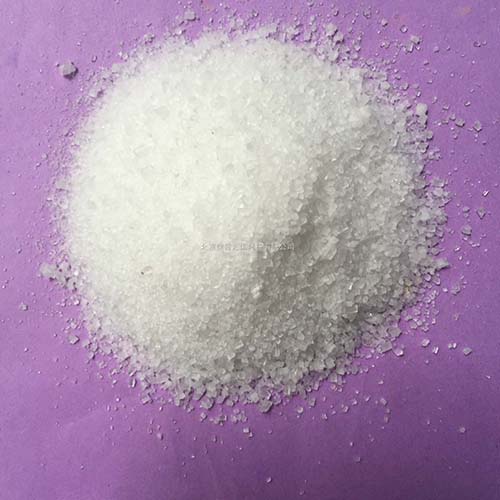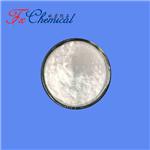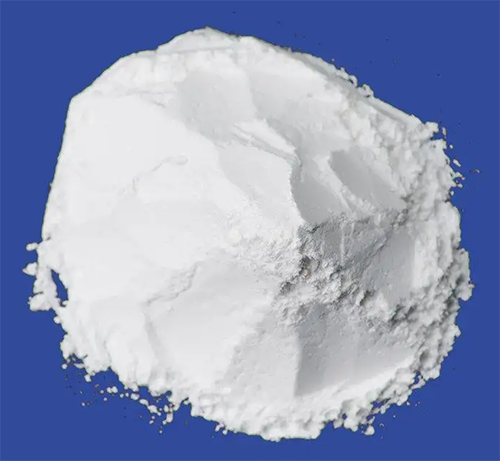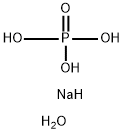Preparation and Structure of sodium dihydrogen phosphate dihydrate
Jun 2,2022
Introduction
Sodium dihydrogen phosphate dihydrate, also known as monobasic sodium phosphate, is an inorganic compound[1]. It is in the form of white powder or crystals and is odorless as well. Additionally, it is soluble in water. The sodium dihydrogen phosphate dihydrate is used as a reagent in the formation of silicate-based grouts. The sodium dihydrogen phosphate dihydrate is produced by the Korean Daejung Company. Some of its chemical and physical properties were displayed.

Picture 1 Sodium dihydrogen phosphate dihydrate powders
Structure
NaH2P04-2H20 crystallizes in the acentric space group P2l2l21 with a, =6.606, a2 = 7.275, a3 = 11.384 A[2]. The setting has been chosen according to Groth. Large single crystals of optical quality are easily grown from aqueous solutions by controlled evaporation at ca. 300 K. Crystals obtained within 12 weeks reached dimensions of ca. 60 χ 60 χ 50 mm. The crystals are bound by the following forms, ordered according to morphological rank: prisms {101} and {Oil}, pinacoid {001}, prism {110}, disphenoids {ill}, {Til}, {112}, and {121} (see Fig. 1). The crystals dehydrate on dry air. The specimens were prevented from decomposition by a thin oil film. They possess no distinct cleavage. The ultraviolet absorption edge is located below 192 nm. The cartesian reference system is related to the crystallographic one by ejHaj. As only one of the two correlate disphenoids {112} and {112} occur (in our case we labelled it {112}) the setting is unambiguous possible. Our crystals turn out to be dextro-rotatory and to exhibit a negative electrostrictive constant d312· Dielectric, electrostrictive and electro-optic properties as well as elastic properties exhibit a strong anisotropy. The three electrostrictive coefficients even show different signs. The electrostrictive effects have the order of magnitude of d 1!! of α-quartz. The electro-optic coefficients are more than by a factor larger than the corresponding values of α-quartz. However, these electro-optic effects reach only about 10% of the much larger effects in KHjPO*. Qualitative studies of the nonlinear optical properties by second harmonic generation (SHG) experiments on thin plates, employing the method of Maker fringes, revealed a SHG coefficient of ca. 20% of d63 of K H2P 0 4 for the wavelength λ = 1064 nm of a neodymium glass laser. Phase matching is possible for wavelengths of the primary beam down to 660 nm. The phase matching directions are assigned to Hobden type. In view of the small polar effects, no technical application of NaH2P04 · 2H 2 0 is expected. Only the optical transparency in the ultraviolet region could be useful for applications, where other polar materials show a strong absorption. The crystals do not show any sign of a phase transition within the temperature range from 250 to 310 K.
Preparation
Using the industrial wet process phosphoric acid (WPA) and sodium hydroxide as raw materials, tributyl phosphate (TBP)+kerosene (diluent) as the extractant, a new process to prepare sodium dihydrogen phosphate was proposed by combining extraction, stripping and crystallization[3]. Necessary experiments were carried out to determine appropriate extraction temperature, adding amount of diluent, back extraction condition and other factors to be applied in the whole process of industrial plant. Compared with the preparation method of sodium dihydrogen phosphate by thermal phosphoric acid, there is a significant difference in the crystallization process caused by difference in anion and cation mass fraction of extracted phosphoric acid. The effects of cooling rate, stirring rate, content (mass fraction) of part impurities, etc. on the crystallization process were mainly investigated to choose crystallization temperature. The relationship between SO42-, F-, Fe3+ and the metastable zone width of sodium dihydrogen phosphate was determined, and the correlation equations were fitted. In the optimized conditions, the yield of phosphorus pentoxide loading in extraction phase is 95.0%, the sodium dihydrogen phosphate product purity (mass fraction) is over 99.3%, and Fe, As, Pb and other impurities have a higher removal rate after three-level extraction.
Reference
1 Murat Mollamahmuto?lu. Strength and permeability properties of sodium silicate-sodium dihydrogen phosphate grouted sand[J]. Arabian Journal of Geosciences volume 14, Article number: 2061 (2021)
2 Bohatý L, Haussühl S. Elastic, electrostrictive, and electro-optic properties of orthorhombic sodium dihydrogen phosphate dihydrate, NaH2PO4· 2H2O[J]. Zeitschrift für Kristallographie-Crystalline Materials, 1984, 167(1-4): 303-306.
3 Suárez M, Barcina L M, Llavona R, et al. Synthesis, crystal structure and intercalation behaviour of hafnium phosphate dihydrogenphosphate dihydrate[J]. Journal of the Chemical Society, Dalton Transactions, 1998 (1): 99-102.
- Related articles
- Related Qustion
- Sodium Dihydrogen Phosphate Dihydrate: Applications in Nanocomposite Synthesis and its Preparation Method Aug 22, 2024
Sodium dihydrogen phosphate dihydrate, produced by neutralizing phosphoric acid with sodium hydroxide, is crucial in biomaterial and nanocomposite applications.
L(+)-Tartaric acid (TA) is the primary nonfermentable soluble acid in grapes and the principal acid in wine, contributing important aspects to the taste, mouthfeel, and aging potential of the product.....
Jun 2,2022APISodium dihydrogen phosphate dihydrate
13472-35-0You may like
- Rolapitant Synthesis
Dec 22, 2025
- Synthesis of 2-(2-Chlorophenyl)cyclohexanone
Dec 22, 2025
- Preparation methods and application of 2-(2-Ethoxyethoxy)ethyl acrylate
Dec 22, 2025
Sodium dihydrogen phosphate dihydrate manufacturers
- Sodium dihydrogen phosphate dihydrate
-

- $0.00 / 1KG
- 2025-12-23
- CAS:13472-35-0
- Min. Order: 1KG
- Purity: 98%min
- Supply Ability: 30tons/month
- Sodium dihydrogen phosphate dihydrate
-
- $20.00 / 1KG
- 2025-12-11
- CAS:13472-35-0
- Min. Order: 1KG
- Purity: 99%
- Supply Ability: 10 mt
- Sodium dihydrogen phosphate dihydrate
-

- $1000.00 / 10kilograms
- 2025-09-26
- CAS:13472-35-0
- Min. Order: 1kilograms
- Purity: 99%
- Supply Ability: 100tons






